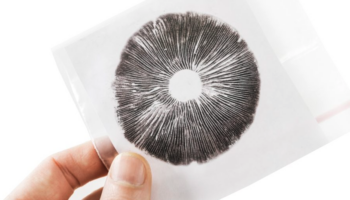The Ultimate Guide to
Amanita muscaria
Fly Agaric, Fly Amanita
Amanita muscaria is a potentially illegal substance, and we do not encourage or condone the use of this substance where it is against the law. However, we accept that illegal drug use occurs, and believe that offering responsible harm reduction information is imperative to keeping people safe. For that reason, this guide is designed to ensure the safety of those who decide to use the substance.Amanita muscaria is potentially dangerous, particularly at high doses. Consuming this mushroom may result in unpleasant physical side effects or difficult psychological experiences. We recommend caution with experimenting with this mushroom—ensure that it is appropriately prepared, start on low doses, and work up carefully if that is your intention. This mushroom is considered neurotoxic from a clinical perspective.
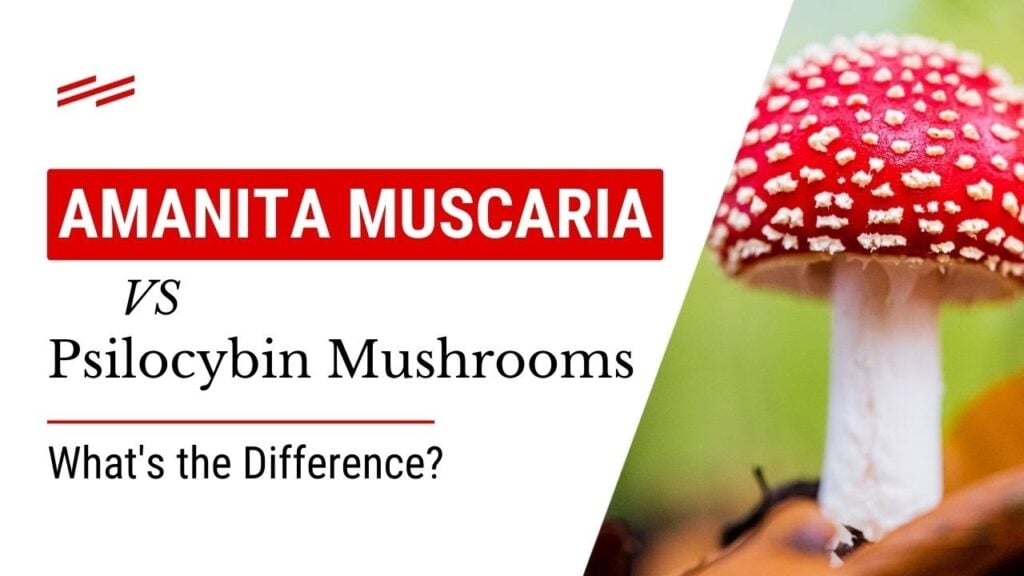
Overview
01Amanita muscaria has a mixed reputation. For many, it inspires either love or hate, a cautionary approach, or mild respect and curiosity. If we think of the term mycophobia [6], the fly agaric is undoubtedly the first fungus to come to mind.
The guide will review the history of Amanita mushrooms, its taxonomy, their psychedelic properties, and how to microdose Amanita muscaria.
What are Amanita muscaria mushrooms?
The genus Amanita is widespread, with species on every continent. All Amanita spp. are ectomycorrhizal, meaning they grow in a symbiotic relationship with some tree species, sharing nutrients in return for carbohydrates.
A. muscariais endemic to temperate and boreal forests of the Northern Hemisphere. It is found growing in association with deciduous trees, including birch (e.g., Silver Birch, Betula pendula), conifers (e.g., Pinus spp.), and firs. As a result of the commercial cultivation of various ornamental trees,A. muscariahas been introduced to many countries, including Australia, New Zealand, and South America. They are recognized as being a “weedy” species[14]—they can be commonly found in a variety of urban environments[15]and are known to be opportunistic.
Amanita spp. grow from the soil around the base of trees, forming an egg-like structure just under the surface. As the mushroom grows, it breaks apart the protective tissue. This protective membrane that encloses the mushroom is referred to as the “universal veil.”
After emerging, the cap is covered with numerous small white pieces of tissue, commonly referred to as warts. The cap changes from globose to hemispherical, and finally to flat, sometimes upturned in mature specimens. In some cases, rain washes away the warts from the cap before the cap has fully expanded. As the cap opens, the partial veil falls away, leaving an annulus or “skirt.” The base of the mushroom is enclosed in the cup-like remains of the “universal veil,” which is referred to as the volva.
What do fly agaric mushrooms look like?
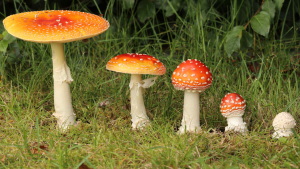
Amanita muscaria mushrooms are a large, conspicuous mushroom; its red cap with white warts is a vivid contrast against the green and brown of the birch and pine forests where it grows. They’re often found in large groups in varied stages of development.
The cap of a fly agaric mushroom is usually 8-20 cm (3-8 inches) in diameter and starts off as a bright red color with white spots. As the mushroom ages, the red color fades to orange or yellow, and the white spots may become less prominent. The cap is usually convex when young but becomes flatter with age. The surface of the cap is smooth and sometimes sticky.
The stem of a fly agaric mushroom is usually 10-20 cm (4-8 inches) tall and 1-2 cm (0.4-0.8 inches) in diameter. It is usually white or cream-colored and has a ring around it that is also white or cream-colored.
The gills of a fly agaric mushroom are white or cream-colored and are closely spaced. They are attached to the stem and turn pale yellow as the mushroom matures.
Amanita muscaria is now regarded as a species complex[16], Separate species referred to by the same name but requiring taxonomic revision. Amanitaceae.orglists four varieties of A. muscaria:
- Amanita muscariavar.muscariais the bright red Fly agaric from northern Europe, Russia, and Asia.
- Amanita muscariasubsp.flavivolvata is red, with yellow to yellowish-white warts, and found from southern Alaska to Colombia.
- Amanita muscariavar. guessowii has a yellow to orange cap, the center more orange or perhaps even reddish orange. This North American variety is found most commonly in the northeast.
- Amanita muscariavar. inzenga has a yellow to orange-yellow cap with yellowish warts, and a stem that may be tan.
Are Amanita muscaria mushrooms psychedelic?
Despite A. muscaria having very strong psychedelic associations in popular culture, it would not be considered psychedelic based on the formal definition. Most compounds considered psychedelic (such as LSD, psilocybin/psilocin, mescaline) are structurally related to the neurotransmitters serotonin or dopamine (which are 5-HT2A agonists) [17].
Amanita muscaria and the related species Amanita pantherina are, however, considered entheogens. By virtue of its psychoactive effects, A. muscaria is often referred to as a “magic mushroom,” but compared to psilocybin-containing mushrooms, the effects are very different.
A. muscaria does not contain psilocybin or psilocin. The active compounds in this mushroom are muscimol and ibotenic acid, muscimol (a selective agonist for the GABAA receptor) having a sedative, depressant, and deliriant effect [18].
Active compounds in amanita muscaria
The active compounds found in A. Muscaria and related Amanita spp., including Amanita pantherina, are primarily muscimol, the isoxazole alkaloid ibotenic acid, and small amounts of muscarine. The compounds cross the blood-brain barrier and act on the central nervous system.
Ibotenic acid is the prodrug for muscimol: during the drying of the mushroom, ibotenic acid is decarboxylated into muscimol. Muscimol is five to six times more potent than ibotenic acid, with fewer harmful side effects.
Ibotenic acid and muscimol are both excreted in the urine after consuming A. muscaria. It has been reported that a substantial fraction of ibotenic acid is excreted unmetabolized between 20 and 90 minutes after ingestion. When pure ibotenic acid is eaten, almost no muscimol is excreted.
Ibotenic acid is a potent NMDA agonist, and powerful agonist of the groups I and II metabotropic glutamate receptors, causing dissociative effects, euphoria, visual and auditory distortions, sensations of floating, and potentially retrograde amnesia. It’s classified as a potent neurotoxin through excitatory amino acid mechanisms, where it acts as a non-selective glutamate receptor agonist [39]. It has been used extensively in animal research to create lesions in rat brains where intracerebral injections of ibotenic acid produce cell loss in several cerebral areas. This degeneration is limited to the injection site and does not affect axons, passage, or synaptic terminals originating in other areas.
Muscimol is an agonist of GABA receptors, acting as a neurotransmitter for GABAA, producing a depressant effect as well as visual distortions/hallucinations, loss of balance, slight muscle contractions, and altered sensory perceptions [35].
Amanita muscaria also contains small amounts of muscarine, which was originally thought to be the psychoactive compound because it binds with muscarinic acetylcholine receptors. It is present in such small amounts that it is generally treated as insignificant.
Identifying Amanita muscaria mushrooms
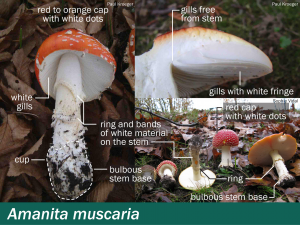
Disclaimer:
Amanita muscaria is a potentially illegal substance, and we do not encourage or condone the use of this substance where it is against the law. However, we accept that illegal drug use occurs, and believe that offering responsible harm reduction information is imperative to keeping people safe. For that reason, this guide is designed to ensure the safety of those who decide to use the substance.Amanita muscaria is potentially dangerous, particularly at high doses. Consuming this mushroom may result in unpleasant physical side effects or difficult psychological experiences. We recommend caution with experimenting with this mushroom—ensure that it is appropriately prepared, start on low doses, and work up carefully if that is your intention. This mushroom is considered neurotoxic from a clinical perspective.
Amanita muscaria is a distinctive-looking mushroom with a bright red or orange cap covered in white or yellowish warts. However, there are several other mushrooms that can be mistaken for Amanita muscaria, some of which are also toxic. It’s essential to be able to identify these mushrooms correctly to avoid accidental poisoning.
Amanita muscaria look-alikes
Amanita gemmata: This mushroom looks similar to Amanita muscaria, with a yellow to orange cap and white warts. However, it has a ring around the stem and a yellowish stem, while Amanita muscaria has a white stem.
Amanita pantherina: Also known as the panther mushroom, this mushroom looks similar to Amanita muscaria but has a brownish cap with white or grayish warts. It also has a ring around the stem and a white stem, unlike Amanita muscaria.
Amanita muscaria var. formosa: This variety of Amanita muscaria has a yellow to orange cap and white warts, but its stem is more slender and has a distinct bulbous base.
Chlorophyllum molybdites: Also known as the false parasol or green-spored parasol, this mushroom looks similar to Amanita muscaria when young, with a white or cream-colored cap and white warts. However, it has a green spore print and lacks the distinct bulbous base of Amanita muscaria.
Fly agaric varieties
Here are some of the best-known Fly agaric varieties:
Amanita muscaria var. muscaria: This is the classic Fly agaric variety with a bright red or orange cap covered in white or yellowish warts. It is found in coniferous and mixed forests throughout the Northern Hemisphere.
Amanita muscaria var. formosa: This variety has a yellow to orange cap and is found in deciduous forests in North America, Europe, and Asia.
Amanita muscaria var. regalis: This variety has a brownish-red cap and is found in oak and beech forests in Europe.
Amanita muscaria var. flavivolvata: This variety has a yellow cap and is found in Japan, Korea, and China.
Amanita muscaria var. alba: This variety has a white cap and is found in Asia and Europe.
Experience
02What to expect
Intoxication results from the ingestion of one to four mushrooms of A. muscaria, with effects beginning within 15 minutes to one hour. Half to one mushroom is considered a low dose (1 – 5 g), with three being the more common dose (5 – 10 g). The main effects may last from four to eight hours, with no significant after-effects[19]. Physical coordination and basic motor skills may be significantly impaired, with some involuntary twitching, drowsiness, sweating, pupil dilation, and increased body temperature. Adverse psychological experiences are also known to occur, with reports of individuals trapped in self-repeating time-loops, visual perception being paused, changes in perception of size, and visionary experiences.
The main psychoactive compound in A. muscaria is muscimol. Many individuals report that the Fly agaric experience can be a positive one, with feelings of euphoria, and a sense of being within a dream-like space. Some visual and auditory effects may be experienced, as well as physical sensations resembling tingling or being touched. Visual effects include the perception of objects or the self appearing either magnified or shrunken. Sometimes, the experience becomes very dissociative, with a lack of awareness of surroundings for several hours.
Care should be taken to prepare the mushrooms properly by thoroughly drying them either in a food dehydrator or oven at a low temperature. The mushrooms should never be eaten raw as this may result in gastrointestinal effects, adverse effects from the ibotenic acid, or allergies to uncooked mushroom proteins.
EFFECTS
03Effects of taking Amanita muscaria mushrooms
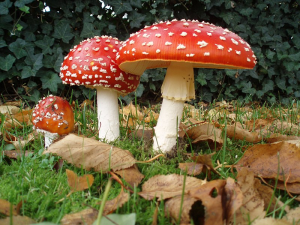
Cognitive effects
As with many naturally occurring psychoactive compounds, there will be variability in the fungi from preparation and individual response. The cognitive effects may become apparent between 30 minutes and an hour, and the duration can last from anywhere between four to ten hours.
Fly agaric can be taken at various doses, starting with one half to a whole dried mushroom (1 – 5 g), with three mushrooms being the more common dose (5 – 10 g). At medium to higher doses (10 – 30 g), the main cognitive effects of Fly agaric can include:
- Looping: When an individual becomes stuck in a self-repeating time loop or repetitive behavior or thought pattern, such as experiencing the same moment over and over again.
- Frame reduction: Using the example of modern films or cartoons, these run at 25 frames a second. The experience of frame reduction is as though your perception is limited to one frame per second or less.
- Size distortions: As described in Alice in Wonderland, visual effects include the perception of objects or the self appearing either magnified or shrunken.
- Feelings of strength: A sense of feeling much stronger than you are.
- Sensations resembling tingling or being touched.
- Visionary dreams and hallucinations.
- Sometimes the experience can become very dissociative, with a lack of awareness of surroundings for several hours.
- A sensation of flying.
A sleep stage is often experienced. The sleep stage is light, and individuals may often be partly aware of surrounding sounds. In this phase, the central nervous system effects of the mushrooms may become apparent, with strange lucid dreams occurring.
After an hour or two, some people awake to a sense of having awoken to a different world. Things appear the same, yet undeniably different in an inexplicable way…down the rabbit hole and into wonderland!
Physiological effects
Amanita muscaria also has a wide range of physiological effects, from euphoria and ataxia (difficulty balancing) to sensory alterations, particularly alterations of hearing, taste, and perspective. A. muscaria may also produce cholinergic symptoms, such as “profuse salivation and mild perspiration” [20].
Other physiological effects from A. muscaria may include:
- Loss of coordination: Feeling drunk, falling over, not being able to respond suddenly to things.
- Muscle twitching: Muscles might twitch at varying degrees.
- Gastrointestinal distress, including nausea and vomiting.
Amanita muscaria is also known to sometimes contain muscarine. It is present in the mushroom in such small amounts it is generally treated as insignificant. Despite this, it is important to be aware of its effects, especially when consuming fly amanita in higher doses.
Specifically, symptoms of muscarine poisoning may include increased salivation, sweating, and lacrimation (crying). Symptoms can also include gastrointestinal distress, confusion, euphoria, loss of muscular coordination, decreased blood pressure, profuse sweating and chills, visual distortions, and a feeling of strength. Effects appear rapidly (within 15 minutes to two hours) and typically last for several hours [21].
Emotional effects
Emotional effects also vary when consuming psychedelic mushrooms. Although Amanita mushrooms do not contain psilocybin, they can have similar emotional effects. Many individuals report that the Fly agaric experience can be a positive one, with feelings of euphoria, and a sense of being within a dream-like space
There are also reports of people feeling a sense of drive after the initial wave of sleepiness. Some people may giggle or laugh throughout their “tripping” experience.
Beyond LSD and Psilocybin is a field. This guide will take you there.
In Third Wave’s Ultimate Guide to Safely Sourcing Psychedelics, you will discover an astonishing menu of psychedelic medicines…
…and how to source them without legal risk.
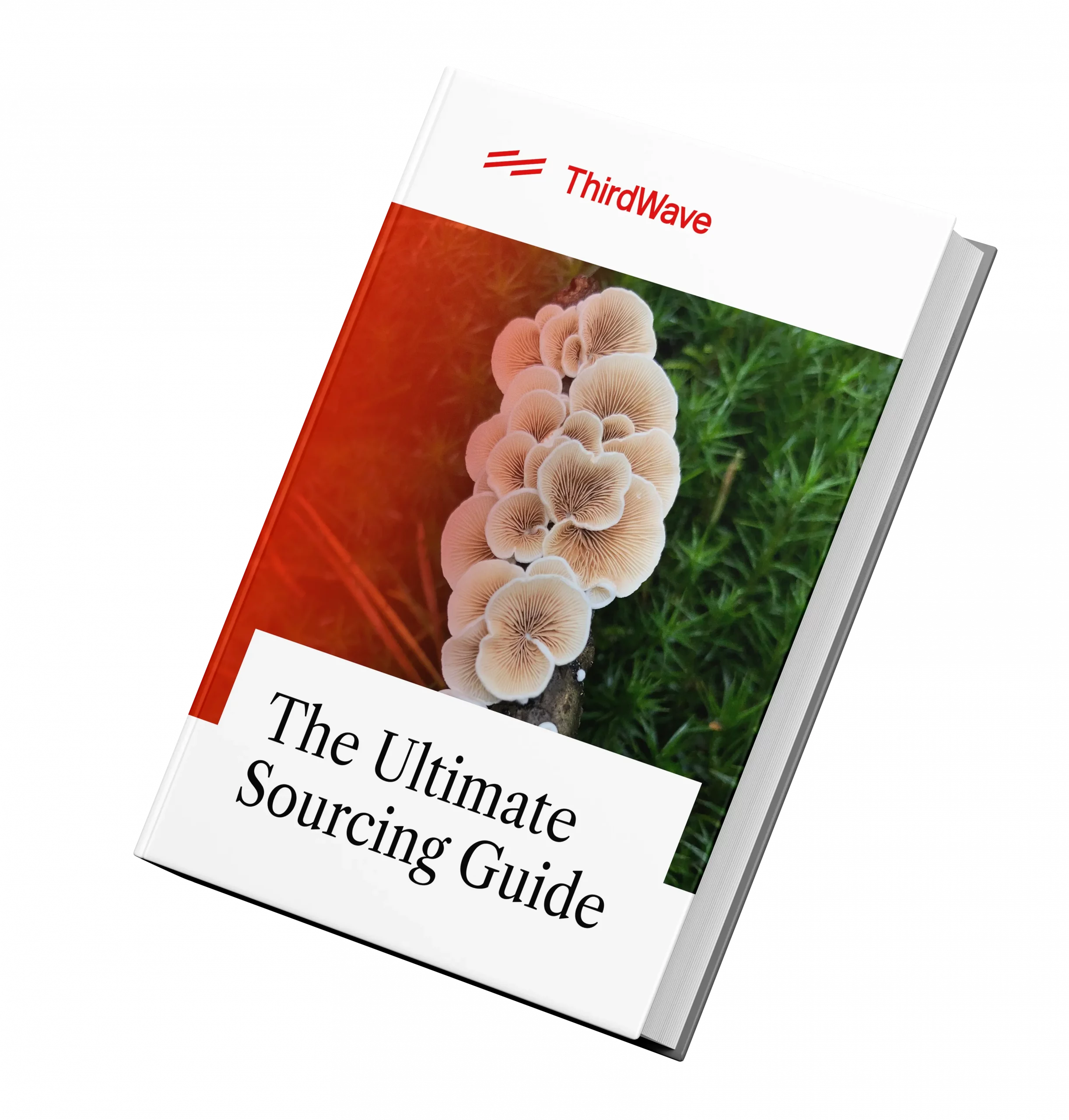
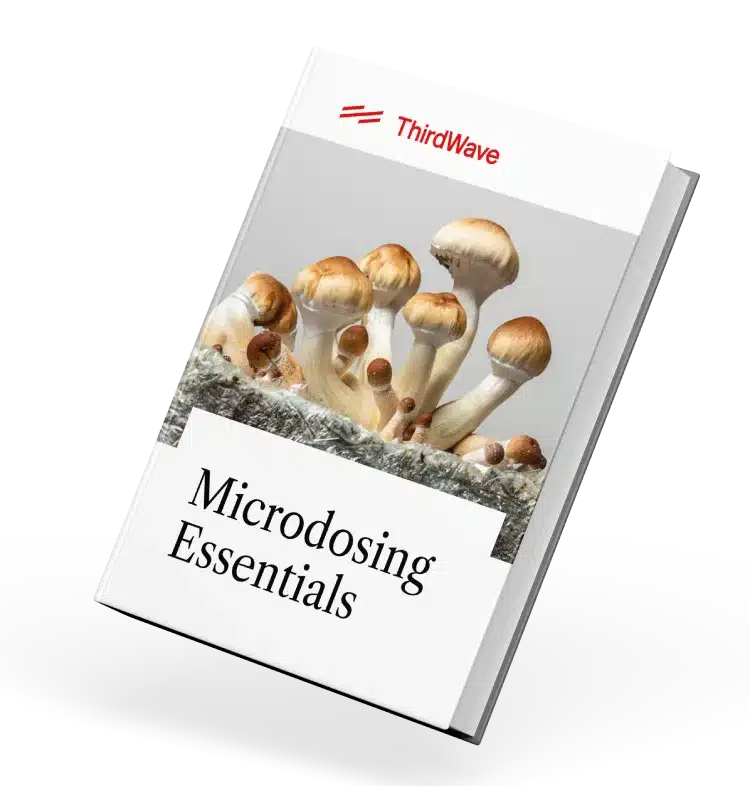
Beyond LSD and Psilocybin is a field. This guide will take you there.
In Third Wave’s Ultimate Guide to Safely Sourcing Psychedelics, you will discover an astonishing menu of psychedelic medicines…
…and how to source them without legal risk.
BENEFITS & RISKS
04Benefits
Amanita muscaria has been used as a homeopathic medicine. There are reports of its use to treat a variety of illnesses, including pain, depression, anxiety, insomnia, fatigue, and addiction/withdrawal. The Koryaks of the Kamchatka Peninsula have a long history of using A. muscaria for shamanic purposes, for healing, and for divination.
In contemporary Western culture, despite the warnings from mycologists and lingering tales from mycophobia, more people are becoming curious about this fungus and exploring its use as an entheogen and to treat depression and physical ailments. There are reports of individuals microdosing A. muscaria to boost their energy and productivity.
Risks
There are risks when consuming Amanita mushrooms. They must be prepared properly for consumption otherwise you can be exposed to its poisonous components. While reports of death are rare, ingestion of raw or fresh Amanita mushrooms can cause stomach cramps and damage to the liver and kidneys. Make sure to review how we recommend you prepare Amanita mushrooms before eating them.
Are you feeling drawn to work with plant medicines? Third Wave’s vetted Psychedelic Directory offers an honest, in-depth guide to safely accessing these substances.
MICRODOSING
05Can you eat Fly Agaric mushrooms?
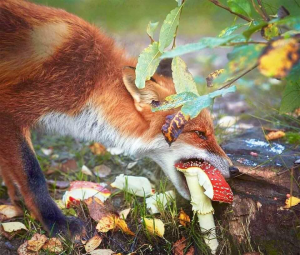
There are no studies to determine the levels of toxicity or long-term effects, and while A. muscaria is technically poisonous (keeping in mind that alcohol is poisonous), it can be safely consumed in controlled doses.
Fly agaric mushrooms are edible as long as you prepare them correctly. This is essential to consuming the mushroom safely, as there are poisonous components to the fungi. However, there is a history of safe A. muscaria consumption when prepared properly.
The cap of the Fly agaric mushroom has a higher concentration of psychoactive substances than the stem [31][32]. The minimum dose to produce psychoactive effects is 30–60 mg of ibotenic acid and around 6–10 mg of muscimol. Care should be taken with dosage, as a single mushroom can contain between 292 and 6,570 micrograms/g of ibotenic acid and between 73 and 2,440 micrograms/g of muscimol [34]. If the average weight of a mushroom is 60 g, then a single mushroom is enough to cause hallucinogenic effects.
Microdosing Amanita muscaria
Microdosing is using sub-perceptual doses of a compound such as psilocybin or LSD to elicit an ongoing benefit like enhanced levels of creativity, energy, and focus. The majority of microdosing regimens are based on using compounds similar in structure to the major neurotransmitters serotonin or dopamine, i.e., tryptamines or phenethylamines, respectively, which are 5-HT2A agonists.
While people do experiment with various psychoactive compounds as part of a microdosing regimen, there is little known about the positive effects of microdosing Fly Agaric. A. muscaria has been used as a homeopathic remedy for depression, tics, epilepsy, etc., and in combination with a tincture of Mandragora root as a remedy for Parkinson’s Disease. [22][23]
However, there have been no formal studies on the use of A. muscaria for microdosing. One person reported, “I’ve had good success with Amanita as a daily tonic for wintertime blues.” [24] Another said, “My brain works so much better, my intelligence is highlighted in a way that I truly feel as if I’m using much more of my potential and my intelligence itself!!!” [25] Others have reported increased productivity, improved ability to focus, and improvement in mood.
If you are curious about how to microdose with A. muscaria, and would like to learn how to start microdosing using a science-based, step-by-step process, Third Wave’s new and improved Microdosing Course can show you how. The course will guide you through the basics—then dive much deeper, helping you tailor your routine to meet your personal goals. The course does not explicitly teach you how to use Fly agaric, but can help you create a strategy to incorporate it into your life for optimal benefits.
Preparing Amanita muscaria
Care should be taken to prepare the mushrooms properly by thoroughly drying them either in a food dehydrator or oven at a low temperature. The mushrooms should never be eaten raw since it could result in negative gastrointestinal effects, adverse effects from the ibotenic acid, or allergies to uncooked mushroom proteins.
Traditionally, a shaman would only ever eat the perfectly dried specimens or consume urine, either from someone who had consumed them or from reindeer known to have consumed them—by collecting the snow the reindeer had urinated on Eating A. muscaria, even at small doses, will produce some psychoactive effects.
A. muscaria is known to be eaten for culinary purposes in parts of Europe, North America, and Japan. The active compounds in A. muscaria are water-soluble — by parboiling the mushrooms and disposing of the water, the mushrooms can be considered edible [7]. William Rubel and David Aurora (author of the epic Mushrooms Demystified) acknowledge that there is not a lot of published information on the edibility of A. muscaria, but claim that, properly parboiled, it is a delicious, sweet-tasting mushroom.
If you are eager to try A. muscaria without the psychedelic effects, you can boil fresh A. muscaria in a large pot of water for a long time. You do this process twice, discarding the water in between boils. You can then cook the mushrooms as you would regular edible mushrooms.
There are other ways to consume Amanita muscaria mushrooms. Most typically they are dried and either eaten as such or made into a mushroom tea. To make the tea, measure your appropriate dry dosage and mix it with citric acid and water. Simmer the mixture for two to three hours before consuming.
Note: Ensure that you collect the correct species. Some experts recommend only collecting specimens that are clearly red, as lighter shades approaching orange may easily be confused with other species. Never consume an Amanita sp. that is cream or white.
Amanita mushrooms vs Psilocybin mushrooms
While amanita mushrooms can have psychedelic properties, they are not psilocybin mushrooms. Psilocybin mushrooms are a type of mushroom that contains the psychoactive compound psilocybin. This compound is known to cause hallucinations, altered perceptions, and other psychedelic effects.
The psychoactive compounds of Amanita mushrooms are muscimol and muscarine. They can cause visual distortions/hallucinations, loss of balance, slight muscle contractions, and altered sensory perceptions.
Psilocybin mushrooms are not considered as toxic as Amanita mushrooms, but should still be consumed safely.
Read our ultimate guide to microdosing psilocybin mushrooms.
LEGALITY
06Are fly agaric mushrooms legal?
Disclaimer:
Amanita muscaria is a potentially illegal substance, and we do not encourage or condone the use of this substance where it is against the law. However, we accept that illegal drug use occurs, and believe that offering responsible harm reduction information is imperative to keeping people safe. For that reason, this guide is designed to ensure the safety of those who decide to use the substance. Amanita muscaria is potentially dangerous, particularly at high doses. Consuming this mushroom may result in unpleasant physical side effects or difficult psychological experiences. We recommend caution with experimenting with this mushroom—ensure that it is appropriately prepared, start on low doses, and work up carefully if that is your intention. This mushroom is considered neurotoxic from a clinical perspective.
Amanita muscaria legality in the United States
Unlike psilocybin mushrooms, which are illegal in many states, Amanita muscaria is legal in all states, except in Louisiana (growing, selling, or possessing A. muscaria is prohibited by the Louisiana State Act 159 [26]). The main active compound, muscimol, is not considered a controlled substance by the federal government of the United States.
While cultivation, possession, and distribution of A. muscaria is unregulated by the United States federal government, it has not been approved for human consumption. According to the Erowid Center’s website, “If sold as a supplement, sales must conform to U.S. supplement laws. If sold for consumption as a food or drug, sales are regulated by the FDA.” [27]
Where is Amanita muscaria illegal?
Amanita muscaria is legal in most countries. As a result, it is easier to list the countries where it is not legal. These include Australia, Romania, The Netherlands, and Thailand [28].
In Thailand, Thai law includes hallucinogenic mushrooms in the Five Category of drugs [29].
In Australia, muscimol is considered a Schedule 9 prohibited substance under the Poisons Standard. A Schedule 9 substance is one “which may be abused or misused, the manufacture, possession, sale or use of which should be prohibited by law except when required for medical or scientific research, or for analytical, teaching or training purposes with approval of Commonwealth and/or State or Territory Health Authorities.” [30]
In the United States, Amanita muscaria is not listed as a controlled substance under federal law, but some states have laws that regulate its use. For example, in California, possession of Amanita muscaria is legal, but it is illegal to sell or transport it for sale. In Minnesota, Amanita muscaria is classified as a Schedule I controlled substance, meaning it is illegal to possess or use.
If you are foraging for this species, check local laws about foraging and find out where it is legal for you to collect; there may be restrictions on where you can forage and what you can forage for. In some countries or states, you may need a collection permit to collect legally on public land. Collecting on any private land requires the owner’s permission.
PHARMACOLOGY
07Ibotenic acid is the prodrug for muscimol—during the drying of the mushroom, ibotenic acid is decarboxylated into muscimol. Muscimol is five to six times more potent than ibotenic acid, with fewer harmful side effects. Ibotenic acid and muscimol are both excreted in the urine after consuming A. muscaria. It has been reported that a substantial fraction of ibotenic acid is excreted unmetabolized between 20 and 90 minutes after ingestion—almost no muscimol is excreted when pure ibotenic acid is eaten.
The cap of the Fly agaric mushroom has a higher concentration of psychoactive substances than the stem [31][32]. The minimum dose to produce psychoactive effects is 30–60 mg of ibotenic acid and around 6–10 mg of muscimol. Care should be taken with dosage as a single mushroom can contain between 292 and 6,570 micrograms/g of ibotenic acid and between 73 and 2,440 micrograms/g of muscimol [34]. If the average weight of a mushroom is 60 g, then a single mushroom is enough to cause hallucinogenic effects.
Ibotenic acid is a potent NMDA agonist, and powerful agonist of the groups I and II metabotropic glutamate receptors, causing dissociative effects, euphoria, visual and auditory distortions, sensations of floating, and potentially retrograde amnesia. Muscimol is an agonist of GABA receptors, acting as a neurotransmitter for GABAA, producing a depressant effect as well as visual distortions/hallucinations, loss of balance, slight muscle contractions, and altered sensory perceptions [35].
Amanita muscaria also contains small amounts of muscarine, which was originally thought to be the psychoactive compound because it binds with muscarinic acetylcholine receptors. It is present in such small amounts that it is generally treated as insignificant.
Muscimol and ibotenic acid are lethal in very high doses. For muscimol, the LD50 (lethal dose for 50% of the test sample) is 45 mg/kg in rats. For ibotenic acid, the LD50 is 129 mg/kg. In another study, the oral LD50 for muscimol was found to be 10 mg/kg in rabbits, and the oral LD50 for ibotenic acid was 38 mg/kg in mice [36][37][38]. No data for humans has yet been published.
Is ibotenic acid a neurotoxin?
Ibotenic acid is classified as a potent neurotoxin through excitatory amino acid mechanisms, where it acts as a non-selective glutamate receptor agonist [39]. It has been used extensively in animal research to create lesions in rat brains where intracerebral injections of ibotenic acid produce cell loss in several cerebral areas. This degeneration is limited to the injection site and does not affect axons, passage, or synaptic terminals originating in other areas.
There are no studies to determine the levels of toxicity or long-term effects, and while A. muscaria is technically poisonous (keeping in mind that alcohol is poisonous), it can be safely consumed in controlled doses.
Get Your FREE Ultimate Guide To Microdosing for Depression.
Sometimes hope comes in micro-doses. This guide will walk you through the process and how to best use the healing potential of psychedelics in a safe, intentional way to heal depression.
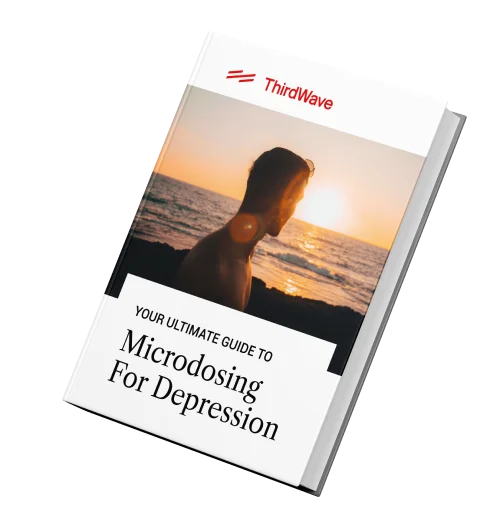

Get Your FREE Ultimate Guide To Microdosing for Depression.
Sometimes hope comes in micro-doses. This guide will walk you through the process and how to best use the healing potential of psychedelics in a safe, intentional way to heal depression.
HISTORY & STATS
08Amanita muscaria mushroom symbolism
Mythology
There are many mythologies surrounding Amanita muscaria mushrooms.
There is a broad mycological literature describing its use and cultural significance, with theories of its appearance among the Viking berserkers [2], the druids of Europe [3], the ancient Hindu text the Rig Veda [4], the shamans of Siberia [4], cave paintings [5], and into the depths of time. It is the archetypal mythological fungus.
In 1968, R. Gordon Wasson published the book Soma: Divine Mushroom of Immortality [4], in which he proposed that A. muscaria was Soma, mentioned in the ancient Hindu text the Rig Veda. Wasson used several arguments, all based on the text and how they could be interpreted. One description of Soma uses the adjective hári, meaning “dazzling” or “flaming,” which Wasson interpreted as being “red.”
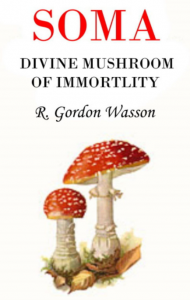
The descriptions fail to mention important features such as roots, stems, or seeds, which Wasson interpreted as suggesting that Soma was a mushroom. The Rig Veda also mentions urine, with one line describing men urinating Soma, a practice recalling the use of urine in Siberia. Soma is also mentioned as coming “from the mountains”, which Wasson interpreted as the introduction of A. muscaria by the Aryans who invaded India from the North. The story reflects a set of ancient practices that were lost, and therefore gained a sense of mythology. There are strong arguments that Soma could be Ephedra, a potent stimulant, or Peganum harmala, a plant that contains harmine and harmaline.
Reading about the Fly amanita is a psychedelic journey on its own. The fairy tales and stories associated with A. muscaria suggest journeys into the inner self. Along the way, we encounter modern ideas suggesting that maybe Jesus was a mushroom. In 1970, philologist, archaeologist, and Dead Sea Scrolls scholar John Marco Allegro published his book The Sacred Mushroom and the Cross [47] in which he claimed that early Christian theology was derived from a fertility cult which consumed A. muscaria as their sacrament.
Despite being widely criticized by academics and theologians alike, the book has been of interest to some ethnomycologists, with some of the ideas remaining popular. The ideas within the book have been paraphrased by some as “Jesus Christ was a mushroom!” [48] For an excellent, easy-to-read analysis, check out Andy Letcher’s book Shroom: A Cultural History of the Magic Mushroom [49].
Then there’s the connection to Santa Claus, with his red and white suit mirroring the red and white spots of A. muscaria (and the associated rumors that his reindeers imbibed this entheogenic mushroom to aid their flight). “An old gentleman dressed in a red and white costume… all the while being in a very merry mood and intoxicated,” loosely quoting Rogan Taylor from this radio show. The red and white suit, the climbing in and out of the chimney, the fact that reindeers love eating the mushrooms have all contributed to the very close similarity with the mushroom-consuming shamans of Siberia. Despite this nexus, our modern red and white Santa Claus image, while falsely attributed to Coca Cola, was created by artist Thomas Nast.
The iconographic representation of this red cap and white spotted mushroom has permeated our idea of fungi very deeply—the cultural associations add so much more to its mystique.
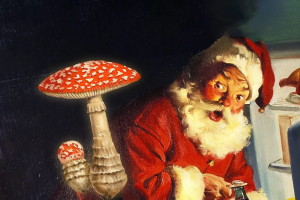
History
Amanita muscaria has a long and interesting ethnomycological history. There is no real way to determine how long A. muscaria has been appreciated for its pharmacology, but this is a very active area of research. In Soma: Divine Mushroom of Immortality, R. Gordon Wasson discusses how its use can be traced back linguistically to approximately 6000 B.C.E. [11]
The first ethnomycological references to the mushroom began in 1730 with Filip Johann von Strahlenberg, who published an account on the use of A. muscaria by the Koryaks of the Kamchatka Peninsula [40]. This report was later corroborated by Stepan Krasheninnikov [41] and Georg Wilhelm Steller in 1755 and 1774, respectively. The use, tales of urine ingestion, and subsequent “intoxication” have been reported by numerous writers who visited the Kamchatka Peninsula in the ensuing centuries.
Interestingly, one of the cultural legacies of the early literature describing the Koryaks of the Kamchatka Peninsula is the word “shaman.” The word is probably derived from the Tungusic word šaman, meaning “one who knows” [9]. This word has been appropriated to describe traditional healers of many cultures, particularly as a result of the New Age movement and the incorporation of indigenous healing practices to create the modern construct we refer to as “shamanism.”
One of the more interesting aspects of the traditional usage of Fly agaric is the use of urine. Muscimol and ibotenic acid pass through the body mostly unmetabolized; therefore, the urine of someone who has recently consumed the mushroom can provide a potent source of the alkaloid [10]. Many Siberian tribes drink their urine to prolong intoxication or share it with others [4].
Reindeer also love the Fly agaric and can be aggressive about not sharing them. There is then a weird partnership between the shaman and the reindeer, where the reindeer will seek out and consume the urine of humans. The shamans will collect and drink the urine of reindeer known to have recently consumed the Fly amanita [11].
With the publication of Mushrooms, Russia and History in 1957 by Valentina and Gordon Wasson [6], a new generation was introduced to descriptions of shamans consuming Fly agaric and drinking urine. R. Gordon Wasson was a New York banker and amateur mycologist who, with his wife, was researching the indigenous use of mushrooms. They were introduced to Maria Sabina, of whom he wrote in his 1957 article for Life Magazine, “Seeking the Magic Mushroom.” But the modern popularization of A. muscaria started with Andrija Puharich’s 1959 book The Sacred Mushroom: Key to the Door of Eternity, which referenced the book by the Wassons. An interest in fungi led many during the 1960s to embrace the folklore and myths around mushrooms and toadstools in general and the Fly agaric in particular.
Taxonomy
Amanita muscaria (L.) Lam. (1783) is a Basidiomycete fungus from the Genus Amanita. It is formally classified within the Class Agaricomycetes, Order Agaricales, Family Amanitacea [12,13].
Amanita muscaria was first described by Carl Linnaeus as Agaricus muscarius in his Species Plantarum in 1753, muscarius referring to musca, the common housefly. Jean-Baptiste Lamarck transferred the species to Amanita in 1783, hence the formal taxonomic reference to “Amanita muscaria (L.) Lam. (1783).”
Although our cultural narratives imply a mushroom, both mythical and toxic, the name “Fly agaric” actually comes from a far more domestic purpose—as an insecticide that used the mushroom to kill the common house fly (Musca domestica) [8]. People would leave a piece of the mushroom’s cap in a glass of water or milk, and the flies landing on the mushroom would be stunned, often drowning in the liquid.
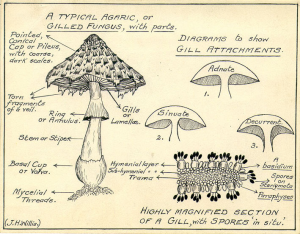
Here is the current taxonomy of the Amanita genus, based on the Index Fungorum database:
Kingdom: Fungi
Division: Basidiomycota
Class: Agaricomycetes
Order: Agaricales
Family: Amanitaceae
Genus: Amanita
Within the Amanita genus, there are many different species, some of which have been subdivided into subgenera or sections based on their morphology and genetic characteristics.
Culture
In 1860, British mycologist Mordecai Cubitt Cooke published The Seven Sisters of Sleep [42], containing chapters on various psychoactive plants and their effects, including A. muscaria. The book is closely associated with the story Alice in Wonderland by Lewis Carroll, which some consider to be inspired by a psychedelic experience [43].
The idea of this red and white spotted mushroom being able to imbue magical powers or cause transformation is strikingly represented in the context of the Nintendo game “Mario Brothers” [1] and more subtly in Alice in Wonderland (or less subtly in recent film adaptations).
Paradoxical riddles, disappearing cats, a caterpillar sitting on mushrooms smoking from a hookah, and—most telling of all—the eating of the mushroom with the advice that “one side will make you grow taller, the other side will make you grow shorter.” That said, there is no evidence that Lewis Carroll ever took A. muscaria. Given the mycophobia of the time, it is very unlikely. Instead, it has been proposed that the story of Alice closely follows the description of the experience as outlined in Seven Sisters of Sleep.
In contemporary Western culture, despite the warnings from mycologists and lingering tales of mycophobia, more people are becoming curious about this fungus and exploring its use as an entheogen, as well as to treat depression and physical ailments. There are reports of individuals microdosing A. muscaria to boost their energy and productivity.
ETHICAL CONSIDERATIONS
09Ethical Considerations of Amanita muscaria Mushrooms
Fly agaric fungus is spread by spores on air currents, through rainwater, or by foot traffic. People picking them may distribute spores further afield and carry them into places where they have not been introduced. Since Amanita muscaria is an invasive species [14], it’s critical to ensure Fly agaric mushrooms aren’t spread into ecosystems where they can push out native species [44].
Examples of their recent encroachment into new habitats include Victoria in Australia [45], Tasmania, and New Zealand [46], where they are invading the native Nothofagus forests and displacing the native mycorrhizal species. If you have been around A. muscaria, to avoid spreading spores, it’s recommended that you wear clean clothes and clean your shoes with alcohol before you enter new forests.
MYTHS
10Was Jesus Christ a mushroom?
In 1970, philologist, archaeologist, and Dead Sea Scrolls scholar John Marco Allegro published his book The Sacred Mushroom and the Cross[47] in which he claimed that early Christian theology was derived from a fertility cult which consumed A. muscaria as their sacrament. Despite being widely criticized by academics and theologians alike, the book has been of interest to some ethnomycologists, with some of the ideas remaining popular. The ideas within the book have been paraphrased by some as “Jesus Christ was a mushroom!”[48] For an excellent easy-to-read analysis, check out Andy Letcher’s book Shroom: A Cultural History of the Magic Mushroom[49].
Was Santa Claus a shaman?
A modern theory suggests that A. muscaria may also be closely associated with the origin story of Santa Claus. “An old gentleman dressed in a red and white costume… all the while being in a very merry mood and intoxicated”, loosely quoting Rogan Taylor from this radio show. The red and white suit, the climbing in and out of the chimney, the fact that reindeers love eating the mushrooms have all contributed to the very close similarity with the mushroom-consuming shamans of Siberia. Despite this nexus, our modern red and white Santa Claus image, while falsely attributed to Coca Cola, was created by artist Thomas Nast.
FAQ
11Can Amanita muscaria kill you?
Muscimol and ibotenic acid are lethal in very high doses. For muscimol, the LD50 (lethal dose for 50% of the test sample) is 45 mg/kg in rats. For ibotenic acid, the LD50 is 129 mg/kg. In another study, the oral LD50 for muscimol was found to be 10 mg/kg in rabbits, and the oral LD50 for ibotenic acid was 38 mg/kg in mice [36][37][38]. No data for humans has yet been published.
However, there is still a lack of consensus about Fly agaric toxicity, with many mixed reports about its use. In most identification books, A. muscaria is considered poisonous, yet in many cultures, it is regarded as both edible and medicinal [7]. R. Gordon Wasson claims that there’s not a single firsthand account of lethal poisoning by A. muscaria. That said, deaths have been reported to occur in association with A. muscaria, so caution is advised.
Does Amanita muscaria have any look-alikes that people mistake it for?
The stark red cap, with the white spots of Amanita muscaria var. muscaria are very distinctive; there are few other mushrooms to confuse with these. That being said, taking into consideration the different varieties, this becomes more problematic.
Some varieties have orange, yellow, or white caps, making correct identification challenging, given the array of Amanita species. Never consume an Amanita with a white cap.
Can you smoke Fly agaric?
Apparently, Fly agaric can be smoked. According to Jonathan Ott, “Smoking produces a more rapid effect of shorter duration.” [20]
Which Amanitas are deadly?
The Genus Amanita contains some of the most poisonous mushroom species. Names like the “death cap” (Amanita phalloides) and the “destroying angel” (A. bisporigera and A. ocreata in eastern and western North America, and A. virosa in Europe) are fairly self-explanatory. With A. phalloides, as little as half a mushroom contains enough toxin to kill an adult human.
Having consumed a meal of “death caps,” some people have no immediate effects while others may feel ill within a couple of hours, and then recover after several hours. Meanwhile, the amatoxins and phallotoxins begin causing damage to the liver and kidneys. Without treatment, from six to 16 days after the poisoning, individuals start to feel weak, then very ill, and soon after that, organ failure and death.
Note: if you think you or a family member may have consumed either “death caps” or “destroying angels,” either call emergency or report to the emergency department of your local hospital ASAP.
Where can you find fly agaric mushrooms?
Fly agaric mushrooms are found in many parts of the world, including North America, Europe, Asia, and Australia. They are often associated with coniferous forests, especially those containing pine, spruce, and birch trees.
In North America, fly agaric mushrooms are found throughout much of the continent, from Alaska to Mexico, and are especially common in the Pacific Northwest. In Europe, they are found in many countries, including the UK, Sweden, Finland, Russia, and others. They are also found in Asia, including parts of China and Japan, and in parts of Australia.
Ready to learn from leading mycologists how to grow your own mushrooms from home?
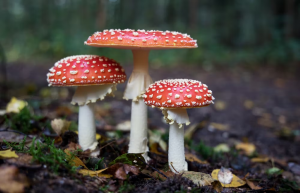
While you can always forage mushrooms in the great outdoors and bring them home with your for consumption, identifying them can be tricky. If you are looking to explore mushroom consumption in the safety of your own home, why not explore growing them there?
Thirdwave has a straightforward, easy, three-phase process for cultivation with their mushroom grow kit. It comes pre-sterilized and ready to use so you can begin growing your mushrooms immediately. If you are new to growing and identifying mushrooms, this kit can help introduce you to everything mushrooms.
FOOTNOTES
12[2] Fatur, K. (2019). Sagas of the Solanaceae: Speculative ethnobotanical perspectives on the Norse berserkers. Journal of ethnopharmacology, 244, 112151. https://www.weltwoche.ch/fileadmin/PDF/WOTR_PDF/Sagas_of_the_Solanaceae_Speculative_ethnobotanical_perspectives_on_the_Norse_berserkers_Karsten_Fatur.pdf
[3] Laurie, E. R., & White, T. (1997). Speckled snake, brother of birch: Amanita muscaria motifs in Celtic legends. Shaman’s Drum, 44, 53-65. https://seanet.com/~inisglas/AmanitaArticle.pdf
[4] Wasson, R. Gordon (1968). Soma: Divine Mushroom of Immortality. Harcourt Brace Jovanovick. ISBN 978-0-88316-517-1.
[5] Devlet, E. (2008). Rock art studies in Northern Russian and the Far East, 2000-2004. Rock Art Studies (News of the World III). Oxford (UK): Oxbow Books.
[6] Wasson, V. P., & Wasson, R. G. (1957). Mushrooms Russia and history/by Valentina Pavlovna Wasson and R. Gordon Wasson. Pantheon Books.
[7] Rubel, W., & Arora, D. (2008). A study of cultural bias in field guide determinations of mushroom edibility using the iconic mushroom, Amanita muscaria, as an example. Economic Botany, 62(3), 223-243. http://www.davidarora.com/uploads/rubel_arora_muscaria_revised.pdf
[8] Muto, T., & Sugawara, R. (1965). The House Fly Attractants in Mushrooms: Part I. Extraction and Activities of the Attractive Components in Amanita muscaria (L) Fr. Agricultural and Biological Chemistry, 29(10), 949-955. https://www.tandfonline.com/doi/pdf/10.1080/00021369.1965.10858494
[9] Ronald, Hutton (2001). Shamans: Siberian Spirituality and the Western Imagination. TPB
[10] Chilton, W. S. (1975). Course of an intentional poisoning. Mcilvainea J Am Amat Mycol.
[11] http://andy-letcher.blogspot.com/2011/09/taking-piss-reindeers-and-fly-agaric.html
[12] Bas C (1969) Morphology and subdivision of Amanita and a monograph on its section Lepidella. Persoonia. Rijksherbarium, Leiden 5(4): 285–579. https://pdfs.semanticscholar.org/2b12/a3b85fa3b44407fd4ff95e6c0f72a6455068.pdf?_ga=2.254597707.237837792.1590850352-857800512.1575727087
[13] Persoon CH (1801) Synopsis methodica fungorum. Gottingae: H Dieterich. Google Books. https://books.google.co.uk/books?id=Zu0TAAAAQAAJ&printsec=frontcover&source=gbs_ge_summary_r&cad=0#v=onepage&q&f=false
[14] Robinson, R. (2010). First record of Amanita muscaria in Western Australia. Australasian Mycologist, 29(1), 4-6. https://www.researchgate.net/profile/Richard-Robinson-26/publication/267951970_First_Record_of_Amanita_muscaria_in_Western_Australia/links/54d963810cf24647581e1249/First-Record-of-Amanita-muscaria-in-Western-Australia.pdf
[15] Bagley, S. J., & Orlovich, D. A. (2004). Genet size and distribution of Amanita muscaria in a suburban park, Dunedin, New Zealand. New Zealand Journal of Botany, 42(5), 939-947. https://www.tandfonline.com/doi/pdf/10.1080/0028825X.2004.9512940
[16] Geml, J., Tulloss, R. E., Laursen, G. A., Sazanova, N. A., & Taylor, D. L. (2008). Evidence for strong inter- and intracontinental phylogeographic structure in Amanita muscaria, a wind-dispersed ectomycorrhizal basidiomycete. Molecular Phylogenetics and Evolution, 48(2), 694-701. https://www.fs.fed.us/pnw/pubs/journals/pnw_2008_Geml001.pdf
[17] https://psychonautwiki.org/wiki/Psychedelic
[18] https://psychonautwiki.org/wiki/Amanita_muscaria
[19] https://erowid.org/plants/amanitas/amanitas_dose.shtml
[20] Ott, J. (1996). Pharmacotheon (2nd ed.). Kennewick, WA: Natural Products Co.
[21] Pouliot, A. & May, T. (2021). Wild Mushrooming: A guide for foragers. CSIRO Publishing.
[22] https://archive.org/search.php?query=Die%20Pflanzen%20des%20hom%C3%B6opathischen%20Arzneischatzes
[23] https://www.zobodat.at/pdf/CAR_187_107_0253-0265.pdf
[24] Johnstad, P. G. (2018). Powerful substances in tiny amounts: an interview study of psychedelic microdosing. Nordic Studies on Alcohol and Drugs, 35(1), 39-51. https://journals.sagepub.com/doi/full/10.1177/1455072517753339
[25] https://mycotopia.net/topic/107517-microdosing-amanita-muscaria-journal/
[26] Louisiana State Act 159 http://legis.la.gov/Legis/Law.aspx?d=321523
[27] https://erowid.org/plants/amanitas/amanitas_law.shtml
[28] https://en.wikipedia.org/wiki/Legal_status_of_psychoactive_Amanita_mushrooms
[29] “Laws in Thailand – Guide for Tourists to Thailand laws”. Thailawforum.com.
[30] “The Poisons Standard”. Federal Register of Legislation. https://www.legislation.gov.au/
[31] Tsunoda, K., Inoue, N., Aoyagi, Y., & Sugahara, T. (1993). Simultaneous Analysis of Ibotenic Acid and Muscimol in Toxic Mushroom, Amanita muscaria, and Analytical Survey on Edible Mushrooms Food Hygienic Studies of Toxigenic Basidiomycotina. I. Food Hygiene and Safety Science (Shokuhin Eiseigaku Zasshi), 34(1), 12-17_1. https://www.jstage.jst.go.jp/article/shokueishi1960/34/1/34_1_12/_pdf
[32] Tsujikawa, K., Mohri, H., Kuwayama, K., Miyaguchi, H., Iwata, Y., Gohda, A., … & Kishi, T. (2006). Analysis of hallucinogenic constituents in Amanita mushrooms circulated in Japan. Forensic science international, 164(2-3), 172-178. http://citeseerx.ist.psu.edu/viewdoc/download?doi=10.1.1.688.466&rep=rep1&type=pdf
[33] Poliwoda, A., Zielińska, K., Halama, M., & Wieczorek, P. P. (2014). Determination of muscimol and ibotenic acid in mushrooms of Amanitaceae by capillary electrophoresis. Electrophoresis, 35(18), 2593-2599.
[34] Patocka, J., & Kocandrlova, B. (2017). Pharmacologically and toxicologically relevant components of Amanita muscaria. Mil. Med. Sci. Lett, 86, 122-134. http://mmsl.cz/pdfs/mms/2017/03/05.pdf
[35] Michelot, D., & Melendez-Howell, L. M. (2003). Amanita muscaria: chemistry, biology, toxicology, and ethnomycology. Mycological research, 107(2), 131-146. http://www.fungifun.org/docs/mushrooms/AmanitaMuscaria.pdf
[36] Merova, B., Ondra, P., Stanova, M., & Valka, I. (2008). Isolation and identification of the Amanita muscaria and Amanita pantherina toxins in human urine. Neuroendocrinology Letters, 29(5), 744. https://www.nel.edu/userfiles/articlesnew/NEL290508A27.pdf
[37] Stebelska, K. (2013). Fungal hallucinogens psilocin, ibotenic acid, and muscimol: analytical methods and biologic activities. Therapeutic drug monitoring, 35(4), 420-442.
[38] Gonmori, K., Hasegawa, K., Fujita, H., Kamijo, Y., Nozawa, H., Yamagishi, I., … & Suzuki, O. (2012). Analysis of ibotenic acid and muscimol in Amanita mushrooms by hydrophilic interaction liquid chromatography–tandem mass spectrometry. Forensic Toxicology, 30(2), 168-172.
[39] Becker, A., Grecksch, G., Bernstein, H. G., Höllt, V., & Bogerts, B. (1999). Social behavior in rats lesioned with ibotenic acid in the hippocampus: quantitative and qualitative analysis. Psychopharmacology, 144(4), 333-338. https://www.researchgate.net/profile/Axel-Becker-3/publication/227210358_Social_behaviour_in_rats_lesioned_with_ibotenic_acid_in_the_hippocampus_Quantitative_and_qualitative_analysis/links/5761548708ae227f4a411abc/Social-behaviour-in-rats-lesioned-with-ibotenic-acid-in-the-hippocampus-Quantitative-and-qualitative-analysis.pdf
[40] Von Strahlenberg, P. J. (1738). An Historico-geographical Description of the North and Eastern Parts of Europe and Asia: But More Particularly of Russia, Siberia, and Great Tartary; Both in Their Ancient and Modern State: Together with an Entire New Polyglot-table of the Dialects of 32 Tartarian Nations. W. Innys and R. Manby. https://books.google.com.au/books?hl=en&lr=&id=WDYsAQAAMAAJ&oi=fnd&pg=PR1&dq=+Filip+Johann+von+Strahlenberg&ots=po0aE8fVqw&sig=mwuLKKcb95iLpeZBvuQJMcX5iA8&redir_esc=y#v=onepage&q=Filip%20Johann%20von%20Strahlenberg&f=false
[41] Krasheninnikov, S. P. (2014). The history of Kamtschatka, and the Kurilski Islands, with the countries adjacent. Cambridge University Press. https://books.google.com.au/books?hl=en&lr=&id=aTvJBAAAQBAJ&oi=fnd&pg=PP6&dq=Stepan+Krasheninnikov+1755&ots=1quoMWItvz&sig=irpAGDYUG3-j90nvCreceZnpkK4&redir_esc=y#v=onepage&q=Stepan%20Krasheninnikov%201755&f=false
[42] Cooke, M., & Cooke, M. C. (1997). The Seven Sisters of Sleep: the Celebrated Drug Classic. Inner Traditions/Bear & Co. https://books.google.com.au/books?hl=en&lr=&id=ttUVMa0kXzMC&oi=fnd&pg=PP9&dq=cooke+seven+sisters+of+sleep&ots=NiRUShyddX&sig=iPXz1BJKLjg65uyWRRmSJLIxqJM&redir_esc=y#v=onepage&q=cooke%20seven%20sisters%20of%20sleep&f=false
[43] https://brewminate.com/fungi-folklore-and-fairyland-supernatural-in-victorian-art-and-literature/
[44] https://fungimap.org.au/about-fungi/invasive-or-weedy-fungi/
[45] Dunk, C. W., Lebel, T., & Keane, P. J. (2012). Characterization of ectomycorrhizal formation by the exotic fungus Amanita muscaria with Nothofagus cunninghamii in Victoria, Australia. Mycorrhiza, 22(2), 135–147. https://doi.org/10.1007/s00572-011-0388-9
[46] https://envirolink.govt.nz/assets/Envirolink/507-NLRC72.pdf
[47] Allegro, J. M. (1970). The sacred mushroom and the cross (p. 65). New York, NY: Doubleday. https://www.evolveconsciousness.org/media/books/history/The%20Sacred%20Mushroom%20and%20the%20Cross%20-%20John%20Allegro.pdf
[48] https://www.nytimes.com/1970/09/06/archives/jesus-christ-as-a-crimsonspotted-fungus-the-sacred-mushroom-and-the.html
[49] Letcher, Andy. 2007. Shroom: A Cultural History of the Magic Mushroom. New York: Ecco. ISBN 0 06 082828 5.
Beyond LSD and Psilocybin is a field. This guide will take you there.
In Third Wave’s Ultimate Guide to Safely Sourcing Psychedelics, you will discover an astonishing menu of psychedelic medicines…
…and how to source them without legal risk.


Beyond LSD and Psilocybin is a field. This guide will take you there.
In Third Wave’s Ultimate Guide to Safely Sourcing Psychedelics, you will discover an astonishing menu of psychedelic medicines…
…and how to source them without legal risk.
